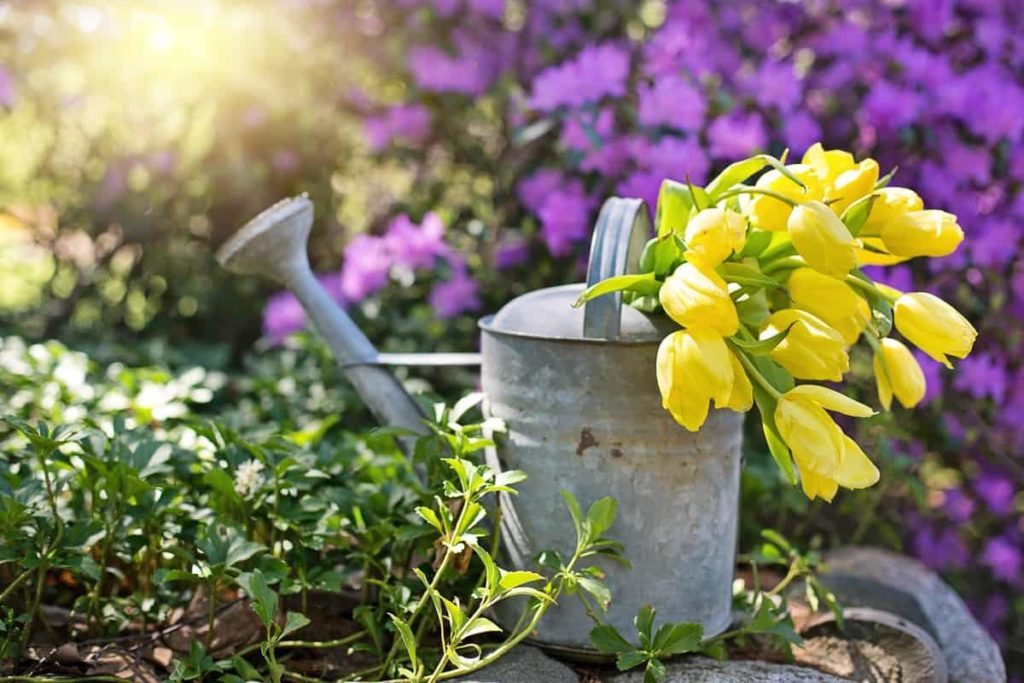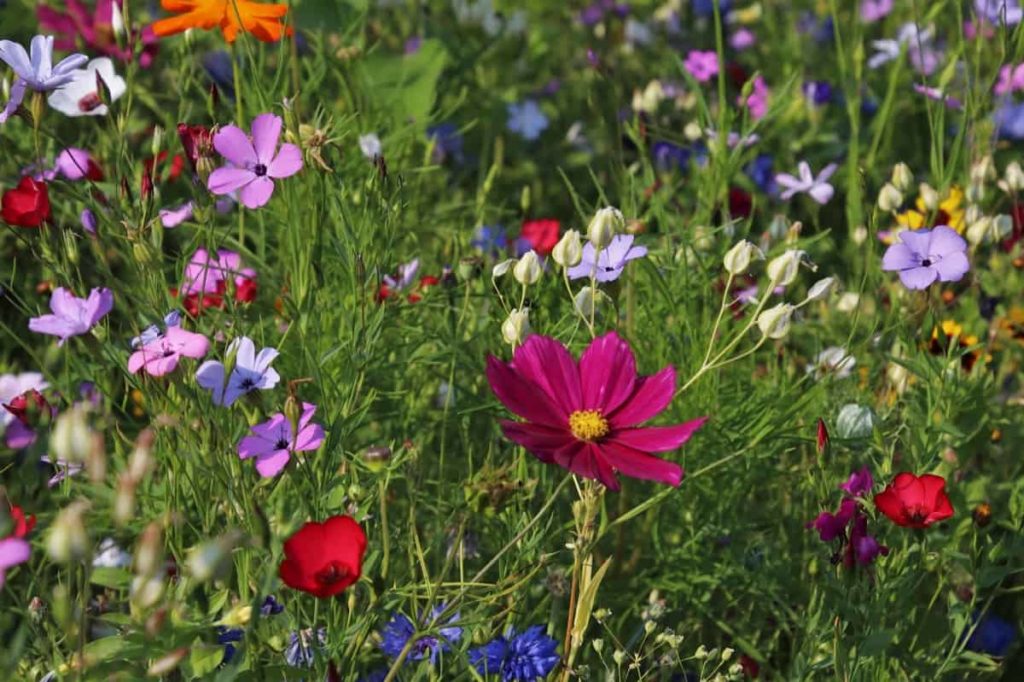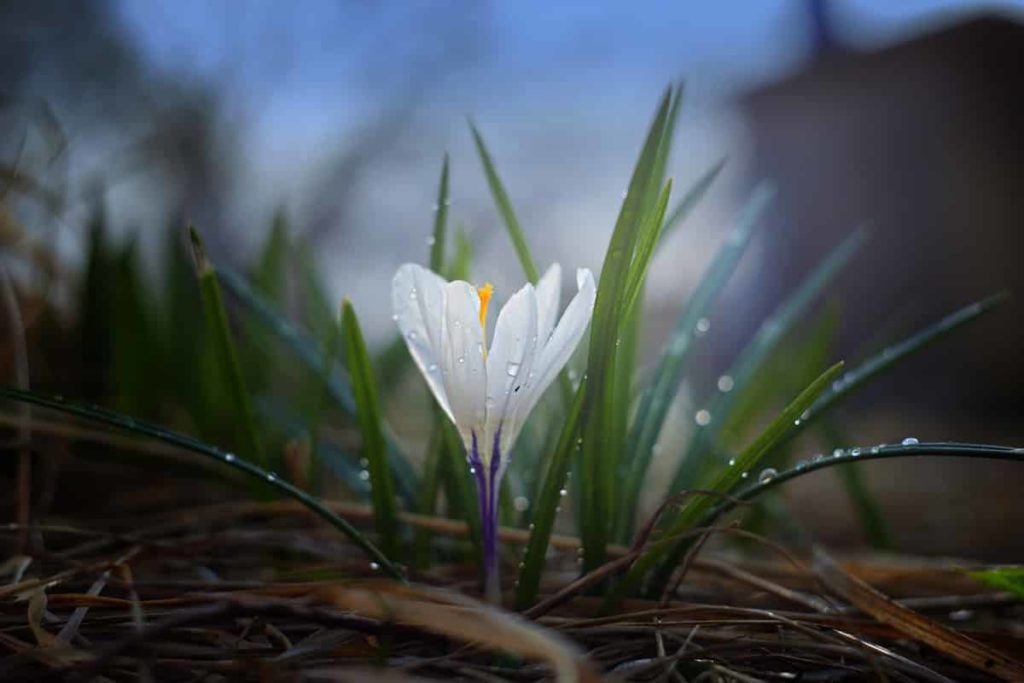Gardening is one of the most satisfying things you can do in your free time. Everybody can benefit by planting aromatic flowers or starting a veggie garden. It doesn’t have to be difficult; you can get into gardening by breaking your job down into easy steps. Soon, you’ll be rewarded for your efforts with stunning views, delectable tastes, and vibrant blossoms.

These stages can help you start growing flowers from scratch, but if you have a specific idea in mind, a garden plan will help you get started. Let’s check out how to start a flower garden from scratch.
How to start a flower garden from scratch
Choosing an area
Light levels
Varying plants require different levels of light. Simply study your garden during the day, check on it every hour or so, to identify which sections receive full sun, at least six hours of light, and which areas receive partial shadow. Making a map showing the areas you’d want to plant and marking off “partial” or “full” for each hour you check on the areas might be helpful.
Please remember that you may need to undertake some care, such as deadheading and bloom separation. Make sure there’s enough space between plants for you to get to them. Build your garden one step at a time. Begin with a tiny flower bed, such as a 5 foot by 5-foot area. A twenty-to-thirty-plant patch of that size may accommodate three varieties of annual crops.
Place your garden in a prominent location. You could forget about your garden if you place it in a neglected area of your yard, which means it could die off without your knowledge. If you post it somewhere you’ll see it every day, you’ll be more likely to remember to give it the attention it requires.
Cleaning
Clearing the sod before planting flowers is necessary since it allows your flowers to thrive. With a shovel, dig beneath the grass and roots, then pick off the layer of grass. Spreadsheets of cardboard over the surface for a less labor-intensive option. On top of the cardboard, spread a layer of compost. At least 2 or 3 inches of soil should be covered and then leave it for four months.
Tilling
To prepare the soil for planting, till it up to make it loose and crumbly. This will also eliminate any weeds that have begun to sprout. Also, use a rake to break up any clods. Remove any rocks you discover from the area. Make the top of the earth fairly flat by smoothing it out.
In case you miss this: How to Make Flowers Bloom Fast, More, Tips, Ideas and Techniques

Fertility
Because most garden soil isn’t ideal for producing flowers, you’ll need to improve it. The easiest option is to fill the top 6-7 inches or so with manure, peat moss, or shredded leaves. In general, any organic substance will suffice. You may even utilize manure that has been sitting around for a long time. even if you cant dig the soil leave the organic stuff on top, and it will decompose over time.
Choosing the flowers
Annuals and perennials
Annual flowers bloom for only one season and must be replanted each year, but perennial flowers are grown once and rebloom for years, if not decades. Annuals make up for their lack of convenience with plenty, producing a deluge of blooms throughout their brief existence. The benefits of perennials, on the other hand, are self-evident: with careful care, you may have years of flowering from a single planting season. There is a combination of both types of plants in most gardens.
Climate
There are hundreds of various species of flowers that can be grown, and while not all of them are suitable for all regions, you’ll have plenty of options. What you choose is mostly determined by personal choice and the design concept you have in mind, however, there are a few other important aspects to consider.
Planting
Buying the seeds/plants
Buying flowers from a plant nursery, conservatory, or farmer’s market is a quick and easy way to obtain them. Look for plants that have a lot of leaf growth. You’ll need to purchase seeds or plants from a garden shop or an internet catalog if you want to cultivate your own.
In case you miss this: Top 10 Flowers to Grow in Pots

Planting by seeds
Start by sowing them indoors 2 to 3 weeks before you want to put them outside. Various flowers are planted at various times throughout the season, but after the last frost of the spring season, most flowers are ready to go. Fill eggshells with dirt and put one seed in each hole to start your seeds.
Keep the soil wet and in a location with plenty of sunshine but little temperature fluctuation. If you’re going to use a grow light, only use it for roughly half of the day. When the time comes, re-till your garden bed and place your seeds in the soil, being sure to provide enough area for them to flourish.
Planting with established plants
Then dig a hole for flower plants using a trowel. Find out how much room each plant needs by doing some study. As the plant grows it requires more area. Water them every day once roots begin to develop.
Frost cycle
You’ll need to know your area’s usual last and first frost dates to ensure your freshly planted garden survives the seasons. Your plants will have a head start if you start your seeds four to six weeks before the usual last frost date. Plants will fill up faster and weeds will be reduced. If you don’t have access to a greenhouse, a closed seed tray undergrowth lights indoors would suffice.
Watering
Water the fresh flowers every day when they are first planted in the ground. Following that, water as needed, which might vary depending on where you reside. It’s necessary to water if the flowers are withering during the day and if the weather is dry.
In case you miss this: Top 18 Flowers to Grow on the Terrace

Maintainance
Follow the spacing instructions on the plant tags, bearing in mind the maturity height. While planting, use excellent quality garden soil and be cautious when removing plants from their pots. Water young plants thoroughly and regularly until they have established themselves. Mulch on top of young plants helps them retain moisture and keeps their roots cool. Your garden will expand in tandem with your gardening abilities. Begin by using a minimal color scheme. It’s a good idea to start with three colors.
Design of flower garden
Combinations
Plant heights, sizes, colors, scales, and textures are mixed to keep the garden interesting throughout the year. Color, movement, and a meadow-like atmosphere will be provided by relaxed plantings.
Planting in layers
Instead of just arranging the layers like a staircase, attempt to gently draw one layer into the next and vice versa to produce a more natural aesthetic. It’s crucial to keep sightlines open at the back of a border so you can see the blooms.
Planting by shape
That form is a wonderful place to start when constructing a flower garden. Perennials come in a variety of forms. Experiment with different shapes of plants to increase the aesthetic. Some will be colorful and active, while others will clash. Placing similar form flowers together might lead you to ideas.
In case you miss this: Top 15 Flowers to Grow in the Backyard

Planting by fragrance
The aspects of a garden, like scent and movement, aren’t generally included in the design. Allow the aromas of flowers to float into your home regions by making use of natural air patterns.
Additional tips for gardening
Make your garden accessible
Choose a location that allows for simple mobility so you can trim, fertilize, and take care of the flower garden without trampling on the delicate plants. If traveling about your garden appears to be a challenge, try constructing a walkway that will help you to move freely across it.
Drainage system
Consider your drainage system before you start growing flowers. Drainage is essential for flower planting success. Flowers as well as other plants can become soggy or develop root rot if sufficient drainage is not provided. Root rot is a plant disease that can destroy a plant fast and spread to adjacent plants. To have a thriving garden, you must avoid accumulating too much water. To stop this from happening to your flower garden, try to plant it in a location that gives the optimum drainage.
Free space to grow
In your flower garden, give your plants adequate room to flourish. Because people desire an explosion of lovely blooms, this is a flower gardening technique that is frequently missed. Placing flowers too close together, on the other hand, might result in inadequate air circulation, which can lead to fungal illness.
In case you miss this: Top 20 Flowers To Grow In A Greenhouse

Research the correct spacing for each variety of flowers before planting it, then mark the separation in the soil to ensure accuracy. Plant flowers widely enough apart so that they have enough room to thrive once they’ve completely matured.
Choose flowers that are easy to grow
Gardening is a labor of love that needs a great deal of patience and can be difficult at times. Some flowers demand a lot of attention, which can be overwhelming for a novice gardener. Instead, begin with flowers that are noted for their tenacity.
Design garden before you start planting
Plan the garden so you’ll be pleased with the end outcome when it blooms. Outline your yard with bulb plants like tulips, then fill in the gaps with perennials and smaller flowering flowers. The difference between the two types of blooms produces a stunning contrast and adds depth and beauty to the garden. Making a garden calendar to remember when to plant, trim, and select your flowers is a helpful gardening tip for beginners.
Disclaimer: The above analysis is only assumed (not proved) to provide great results when practised. We are not responsible for any errors that arise on this website or from any decision or action taken as a result of using this site.
- Where to Place Indoor Plants in Your Home
- How to Grow Tomatoes Organically at Home: A Comprehensive Guide
- Organic Gardening on a Budget: Low-Cost Methods and Materials
- Gongura Seed Germination and Planting Methods
- Cabbage Seed Germination and Selection
- Broccoli Seed Germination and Selection
- Asparagus Seed Germination and Variety Selection
- Seasonal Flower Gardening: Best Practices for Spring, Summer, Fall, and Winter
- How to Grow Hibiscus from Flower
- Plantation Ideas for Home Decoration: A Beginners Guide
- Flower Garden Designs and Layouts for Beginners
- Planting and Spacing Techniques in Papaya: A Beginner’s Guide
- Growing Gold: Essential Techniques for Planting Pineapples
- How to Make Kalanchoe Plant Bushy: Home Remedies and Solutions
- 11 Reasons Why Your Gardenia is Not Blooming: Home Remedies and Solutions
- Eco Elegance: The Guide to Designing a Drought-Tolerant Landscape
- Gardening on a Slope: Strategies for Hillside Landscaping
- Nourish and Flourish: Top Organic Mulches for Thriving House Plants
- Everything You Want to Know about Indian Mogra Flower: Discover Uses and Growing
- Green Thumb Success: Expert Tips for Cultivating Greenhouse Pumpkins All Year Round
- Maximize Growth & Flavor: The Ultimate Guide to Companion Planting in Herb Gardens
- How to Control Rhododendron Problems Naturally: Home Remedies and Organic Ways to Fix Them
- Natural Magic: The Remarkable Benefits of Cinnamon for Plants
- Best Steps to Revive Dying Tulip with Natural and Organic Treatment
- 10 Reasons Why Your Angel Trumpet is Not Blooming: Remedies and Treatment
- How to Fix Periwinkle Leaf and Flower-Related Problems: Natural Remedies and Solutions
- How to Fix Zinnias Leaf and Flower Problems: Discover Natural and Home Remedies
- Organic Steps to Induce Lemon Tree Flowers: A Comprehensive Guide
- Bloom Booster: Crafting the Perfect Homemade Bougainvillea Fertilizer
- Optimizing Growth: A Guide to Applying NPK Fertilizer for Potted Plants
- 10 Best Homemade Fertilizers for Rubber Plant: DIY Recipes and Application Method
- How to Boost Female Pumpkin Flowers: Effective Steps for More Flowers and High Yields
- Transform Your Indoor Garden: Top Benefits of Pink Salt for Houseplants
- 10 Best Homemade Fertilizers for Peacock Plants (Calathea): Easy DIY Guide
- Unlock Blooms: 9 Reasons Why Your Potted Chrysanthemum is Not Blooming
- 8 Reasons Why Your Potted Hibiscus is Not Blooming: Fix it with Simple Solutions